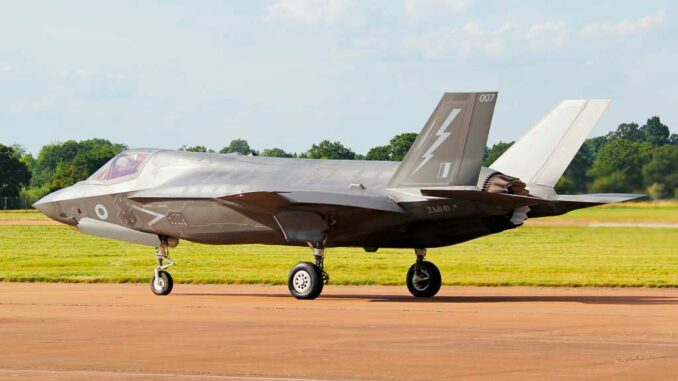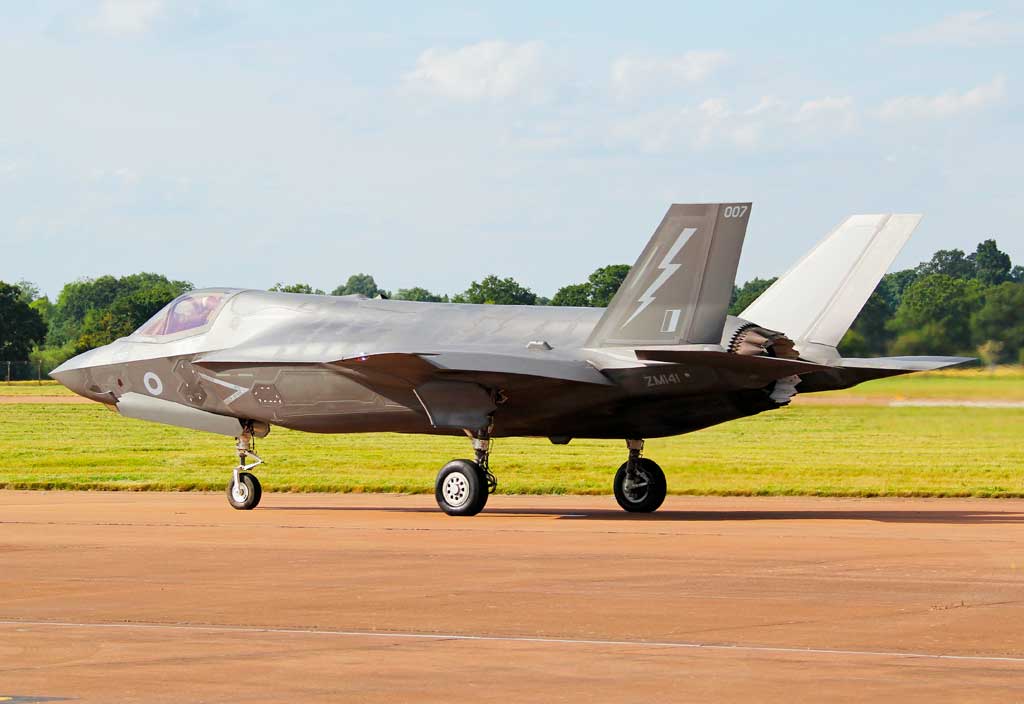
A Russian Telegram channel claims to be disseminating classified documents on the F-35; this leak reignites the debate on the robustness of the F-35 program’s IT security.
Facts reported by the press
On Telegram, a Russian military blogger calling himself **” Fighterbomber,” and claiming to be a pilot, posted sensitive documents concerning the *5th generation F-35 fighter jet*, as well as other systems such as the F-15, Switchblade drones, and guided munitions. He claims to have *250 gigabytes* of military data from a US company.
The publication of these documents in early July quickly attracted attention. According to the South China Morning Post, these files include technical manuals and maintenance data, while according to the Pentagon, the information is false. However, Chinese cybersecurity expert Tang claims that, after analysis, the content appears to be highly authentic.
What has been leaked
The accessible documents reportedly include:
- Manuals for the F-35 Lightning II (maintenance, technical procedures).
- Similar documents for the F-15 and its modifications.
- Information on the Switchblade drone and JDAM munitions.
- Data on guidance kits such as Paveway.
Some files were subsequently deleted, but others remain available for download.
Expert analysis
Faced with the leak of information about the F-35, the reactions of authorities and specialists vary widely, reflecting the uncertainty surrounding the disclosure of the F-35 on Telegram. The Pentagon responded quickly, claiming that the documents released were fakes, but without indicating whether the entire archive of nearly 250 gigabytes had been thoroughly analyzed. This position aims to limit media impact, but leaves doubts about the real scope of the leak of confidential documents on the F-35. For its part, Lockheed Martin, the aircraft’s manufacturer, insists that the IT security of the F-35 program has been strengthened in recent years with the integration of multi-layered protection systems and regular audits of subcontractors. However, some experts consider these measures insufficient given the sophistication of digital espionage surrounding the F-35. In China, cybersecurity expert Tang believes that the published content appears highly authentic, while pointing out that only official military expertise can confirm the nature of the data. Finally, several analysts consider that the majority of the files are more technical and logistical documentation than actual design plans, thus reducing their direct value for offensive exploitation, but nevertheless revealing a worrying vulnerability of F-35 data.
Security issues
1. Cyber threat and leakage of critical information
With 250 GB potentially compromised, the leak raises questions about the fragility of the F-35 program’s IT security. The data includes internal procedures, weapon schematics, and potentially strategic information.
2. Limited strategic value… or not?
Although the documents appear to be technical rather than strategic, their disclosure could help to understand maintenance patterns, potential vulnerabilities, or typical configurations.
3. The authenticity of the documents is disputed
The Pentagon’s denial contrasts with the validation provided by expert Tang. This ambiguity is preventing the authorities from responding firmly and precisely.
4. Impact on international trust
As the F-35 is operated by several allied countries, a leak of this kind undermines trust between partners, particularly with regard to the protection of strategic F-35 data.

Assessment of security surrounding the F-35
Gradual but insufficient reinforcement?
The issue of IT security for the F-35 program has been at the heart of the debate for several years. The manufacturers involved, primarily Lockheed Martin, claim to have implemented multi-layered cybersecurity systems, including enhanced encryption, network segmentation, and real-time monitoring. These measures are designed to protect both operational data and technical documentation. However, the leak of sensitive information about the F-35 reveals that these systems remain vulnerable. The most likely attacks rely less on a frontal assault on central systems than on indirect methods: targeted phishing campaigns against employees, infiltration via subcontractors with limited access, or exploitation of human error in security procedures.
Need for enhanced surveillance
The disclosure of the F-35 on Telegram highlights the need for continuous surveillance. Encrypted platforms and obscure networks have become major channels for disseminating this type of data. In this context, three measures appear to be a priority: strengthening cyber surveillance of unconventional spaces, increasing technical audits of industrial partners, and improving staff training to limit intrusions facilitated by social engineering.
Essential public-private dialogue
Finally, the management of such a threat cannot be left to industry alone. The military authorities responsible for protecting the F-35’s strategic data must develop more agile cooperation mechanisms with companies. Without close coordination and transparent communication, each incident risks undermining not only security but also the international credibility of the F-35 fighter jet program.
Figures and comparisons
The seriousness of the F-35 information leak can be gauged first and foremost by its volume. The 250 gigabytes of data mentioned represent the equivalent of tens of thousands of PDF documents, ranging from detailed technical manuals to operational maintenance files. Such a large amount of information, even if it contained only a limited percentage of truly sensitive documents, already poses a major risk of compromise for the F-35 fighter jet program.
The dissemination of military information on Telegram exacerbates this danger through its multiplier effect. The channel in question has more than 500,000 subscribers, an audience capable of relaying the data in a matter of minutes across various forums, social networks, and sharing sites. This makes any attempt to completely remove the files virtually impossible and poses a structural problem in managing leaks of military secrets about the F-35.
The potential impact goes beyond the US alone. To date, 18 countries operate or have ordered the 5th generation F-35 fighter jet, meaning that any compromise of data could affect an entire alliance and undermine the protection of strategic F-35 data at the multinational level.
This is not an isolated incident. In 2023, a previous leak of sensitive information had already affected US military strategy in Ukraine. The repetition of such incidents highlights the persistent threat of digital espionage surrounding the F-35 and many other programs, confirming that the technological battle is being fought as much in the data fields as in the skies.
War Wings Daily is an independant magazine.